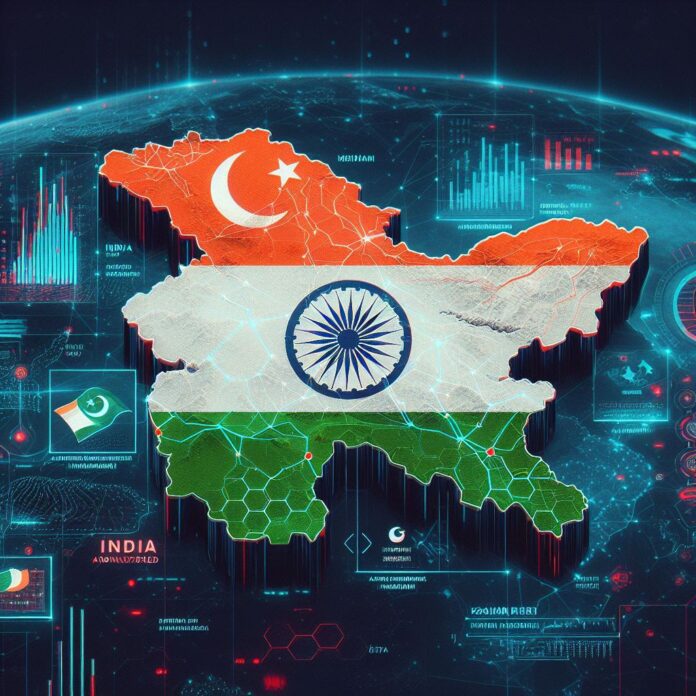Home Minister of Election Bound India said that every inch of Pak Occupied Kashmir belonged to India and no force could snatch it away from India. Amidst the rising insurgency, POK citizens are appealing for India’s intervention. On this background it becomes important to understand the root cause of the issue.
What is POK?
Pakistan-occupied Kashmir (POK) refers to the region of Kashmir that is administered by Pakistan. It includes the territories of Azad Jammu and Kashmir (AJK) and Gilgit-Baltistan (GB), which Pakistan considers as separate autonomous territories. POK has been a source of conflict between India and Pakistan since the partition of British India in 1947, with both countries claiming the entire region of Jammu and Kashmir as part of their territory.
For the last couple of years, Pakistan-Occupied Kashmir (POK) is facing a severe crisis, with its residents protesting against the Pakistan government’s neglect and poor economic conditions. The region has been ignored for decades, leading to widespread dissatisfaction among its people.
Protests for Economic Reforms
The civil unrest in POK began when residents launched protests demanding better economic conditions and development. The Jammu Kashmir Joint Awami Action Committee (JAAC) led the protests, seeking electricity at subsidized rates, cheaper wheat flour, and an end to elite privileges.
Last Wednesday and Thursday, the Pakistan authorities had arrested around 70 JAAC activists during raids in Muzaffarabad. This became the catalyst for the shutdown and strike over the weekend.
The protests and strikes were widespread, with demonstrations occurring in various parts of PoK such as Samahni, Sehansa, Mirpur, Rawalakot, Khuiratta, Tattapani, and Hattian Bala.
Pakistani Rangers and local police resorted to firing tear gas, pellets, and bullets in the air to disperse the protesters, resulting in two fatalities.
Tensions escalated when Pakistan police tried to suppress the protests, leading to clashes with protesters. Tragically, one police officer was killed, and over 100 people, mostly policemen, were injured in the violent clashes.
The clashes mirror similar protests in 2023, indicating long-standing grievances regarding electricity costs and essential services in the region.
Root Cause: Economic Neglect and Police Brutality
Residents attribute the protests to years of economic neglect by the Pakistan government. They feel marginalized and used for political agendas against India. Moreover, the heavy-handed tactics of the Pakistan police and the atrocities committed by the Pakistan Army have further fueled the unrest.
The protests have also highlighted a growing anti-Pakistan sentiment in POK. Posters demanding a merger with India have appeared, reflecting the disillusionment of the people with Pakistan’s governance.
The cash-strapped Pakistani government has faced mounting pressure from citizens reeling under back-breaking inflation, compounded by stringent IMF conditions for a $3 billion bailout. Increased electricity tariffs have proven to be the proverbial final straw.
These protests are not isolated incidents but part of a pattern of discontent. Social media has played a crucial role in highlighting the ground realities and garnering support for the protesters.
You May Also Like to Read
Pakistan’s ISI Operative Honey Traps Indian Defense Contractor Employee
A Tale of Contrasts: POK vs. Indian Kashmir
The contrast between POK and Indian Kashmir is stark. While Indian Kashmir is experiencing economic growth and tourism, POK lacks even the basic necessities of life. The disparity has intensified the demand for Pakistan to return POK to India.
In Indian Kashmir, there has been notable economic growth, particularly in tourism, handicrafts, and horticulture, attracting visitors from around the world. However, PoK lags behind, facing economic hurdles with limited infrastructure and underdeveloped tourism, impacting livelihoods.
Moreover, while Indian-administered Kashmir has better access to basic necessities like healthcare, education, and sanitation despite its own challenges, PoK struggles with inadequate healthcare facilities, education, and essential services. Both regions grapple with political tensions and aspirations for sovereignty, emphasizing the need for governments to address these complexities and work towards peace and prosperity.
The crisis in POK underscores the need for urgent economic reforms and development in the region. The protests are a wake-up call for the Pakistani government to address the grievances of the people and take concrete steps towards improving their living conditions.



